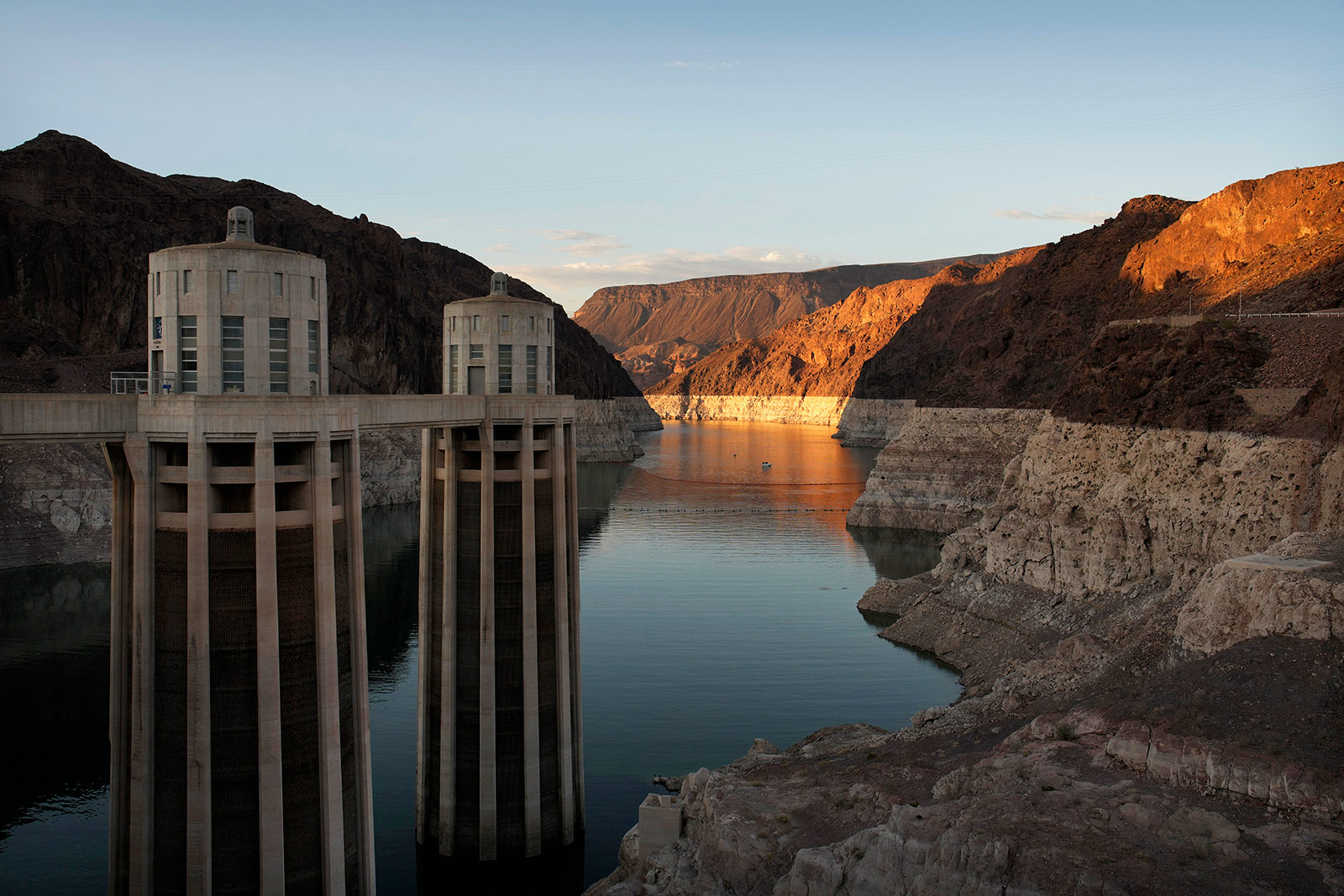Hello Parched readers, Emily Pontecorvo here. For this week’s issue, we’re bringing you something a little different — a Q&A with Sean Turner, a hydrologist and water resources engineer who recently published a retrospective study on hydropower and drought.
Reports of low water levels at a few big hydropower plants in the West over the last few years have made it seem like hydropower is becoming less reliable. Last summer, officials in California were forced to shut down the Edward Hyatt Powerplant when water levels in Lake Oroville, the reservoir that feeds the plant, dropped below the intake pipes that send water into its turbines. In March, water levels dropped to historic lows in Lake Powell, the reservoir that supplies the Glen Canyon Dam in Arizona, bringing warnings of a potential plant shutdown in the near future.
Hydropower is a major source of carbon-free energy for the West — during a wet year, it can meet 30 percent of the region’s annual electricity demand. So reports like these were alarming.
But in Turner’s study, conducted with colleagues at the Pacific Northwest National Laboratory, he looked back at the historical record to see how the Western hydropower fleet has been affected by periods of drought over the 20th and 21st centuries. What he found shows that the reality is more complex, and that even during a serious drought, hydropower is more reliable than people might think.
“I think the misconception about hydro is driven by these marquee cases like Glen Canyon and the Hoover Dam on the Colorado River,” he told me. “Those are really big and significant plants, but they’re a very, very small part of the overall Western hydropower fleet, which consists of hundreds of plants across the entire Western region, contributing to an interconnected power grid. You need to study the whole system.”

The high water line of Lake Mead near water intakes on the Arizona side of Hoover Dam AP Photo / John Locher
What was the driving question behind your recent study on hydropower and drought?
The question was, what does drought actually mean for hydropower in the West? How does it affect different regions? We’re talking about 11 states, an enormous area, and diverse climates throughout the West. We’ve got the data to answer that question really rigorously.
What did you find?
Even during the most severe droughts of the last 20 years, the Western hydropower fleet still maintained 80 percent of its average annual output — equal to the total output from all other renewables combined in the West. The reason you get this reliability is that despite the West’s notoriously volatile climate, there’s climate diversity. Drought in one region may be associated with wet conditions in another region, and so you’re unlikely to see the entire hydropower fleet affected by drought at the same time.
Is the past a good predictor of the future in this case, because of climate change?
It depends. The reservoirs in the Southwest are totally unique. They store such huge volumes of water equal to multiple years of flow in the river. On balance, it looks like the impact of climate change in this area is going to be to slightly reduce the availability of water. And you have a system that’s already on a knife’s edge, where the amount of water allocated for cities, for agriculture, is already pretty much equal to the mean flow of the basin. So over a long period of time, if you don’t change how much water’s being taken out of the system, reservoirs are going to draw down. And you can kind of say that the past is no longer a reliable predictor of the future.
There are other systems, most other systems in the West, where your reservoirs fill up and draw down over much shorter periods of time. And that can be on the order of days in some of the major plants in the Columbia River Basin. In those cases, the past is a much more reliable predictor of the future. Even minor changes to the flow regime in the Columbia River are not going to greatly impact how much power can be generated from those plants.
This interview has been edited for length and clarity. To read more of our discussion with Turner, click here.
What we’re reading:
Feds put a price tag on water in the Colorado River Basin to spur farmers to conserve
Alex Hager, KUNC
◆ Read more
A pivot on desalination plants: California approves project in Orange County
Rachel Becker, CalMatters
◆ Read more
U.S. winter wheat farmers plant into dust as Plains drought persists
Julie Ingwersen, Reuters
◆ Read more
Shasta Lake helped water California; now its dryness is a threat to the state
Jim Carlton, Wall Street Journal
◆ Read more
‘The U.S. dammed us up’: How drought is threatening Navajo ties to ancestral lands
Annette McGivney, The Guardian
◆ Read more


